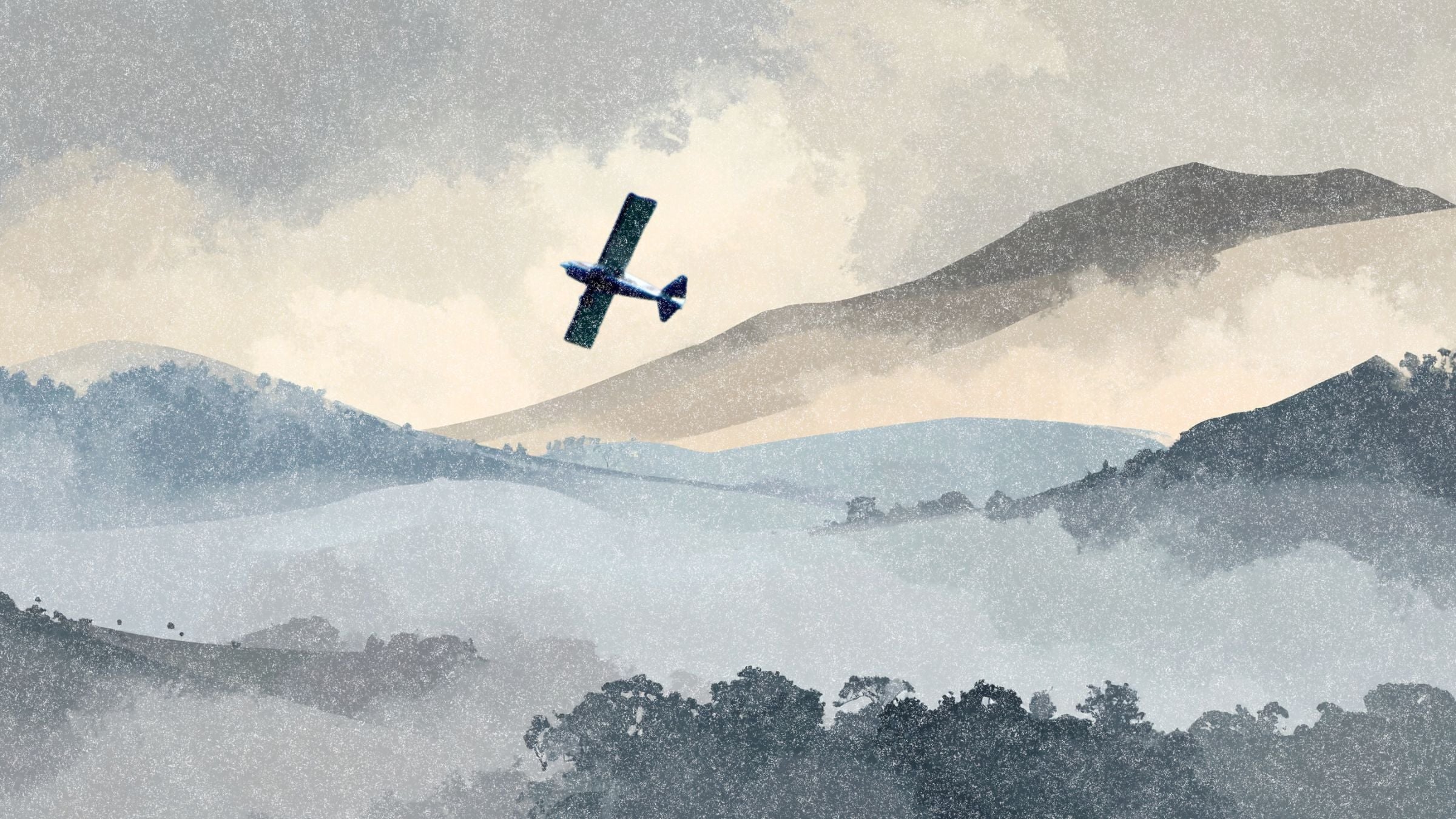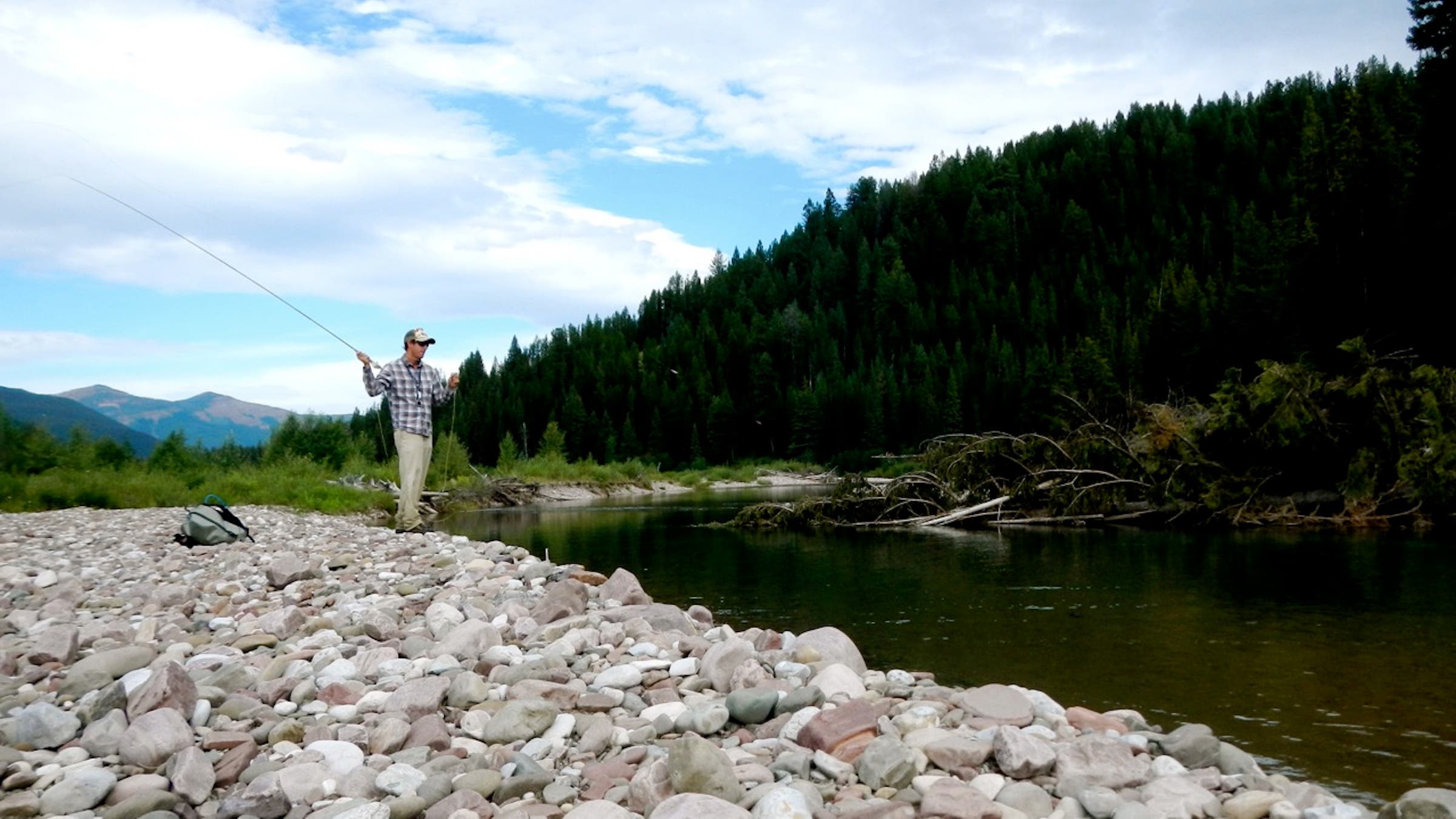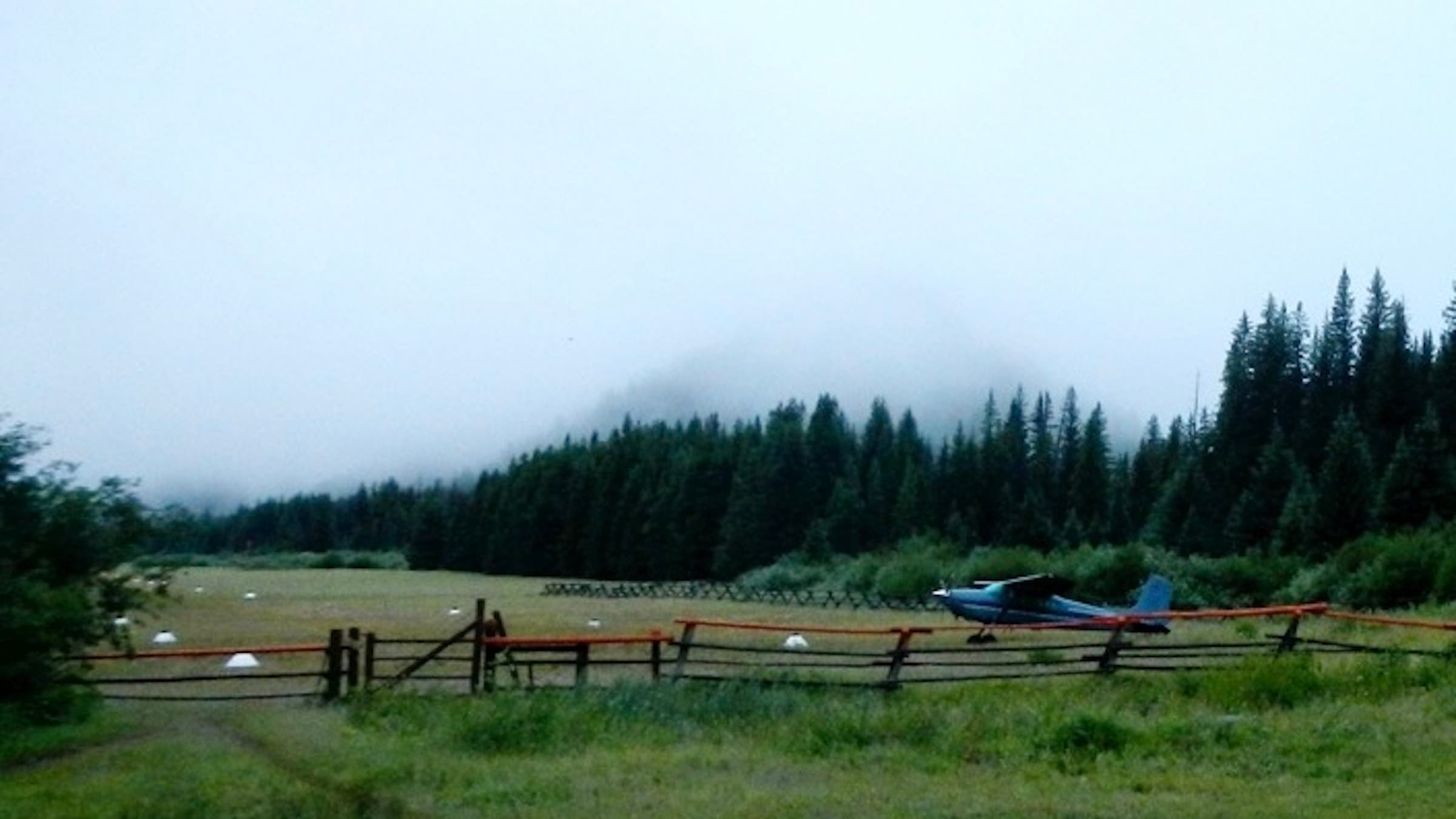What It's Like to Fly Out of the Montana Backcountry in a Tiny Plane and Bad Weather

(Photo: Courtesy Will Rice, Canva)
We stood on the grass airfield at 4,855 feet in the Montana backcountry. It was still drizzling. The night before, it had dumped rain, and our campsite and fly fishing gear were blown and scattered into the Bob Marshall Wilderness.
The granite peaks that stood above us like stone cathedrals reached skyward past 8,600 feet. We knew they were there, but we couldn’t see them. Instead, we were buried in a blanket of thick fog. The mist wound through our broken-down camp like a specter.
It was our last day of our DIY fly fishing trip in The Bob. Our target species was the native westslope cutthroat trout—not a particularly large fish as trout go, but absolutely wild and beautiful. Westslope cuttys are green in color, have a bright slash of orange around their lower jaw, and are speckled with non-concentric spots. I had read ahead of time that they were not shy, not hard to find, and known to aggressively crush dry flies on the surface of the water.
After four days of wet wading and exploring the river around the remote landing strip on foot, it was time to pack up and fly home.

The Bob Marshall Wilderness Area covers more than one million acres along 60 miles of the Continental Divide in western Montana. Established in 1964 under the Wilderness Act, the area was named for Bob Marshall, a young forester, conservationist, and co-founder of the nonprofit the Wilderness Society.
The exit plan should have been simple. We were supposed to stow the four-weight rods, sleeping bags, rain gear, bear spray, tents, and depleted cooler and depart the meadow at 7:00 A.M. sharp in a single-engine Cessna 182 Skylane. Our pilot told us we were heavier than he was comfortable with, but that the morning air would be smooth for takeoff. All good reasons to get out of Dodge early.
Instead, we stood in the drizzle around a soggy, smoking campfire, trying to stay warm while watching the cloud bank creep up and down the nearly invisible mountainside.
The pilot outlined the plan: wait out the clouds and hope for a break. The rain had started the night before around 9:00 P.M. and blew hard for six hours. By 10:00 A.M., we began seeing pockets of blue sky, and the fog started to lift. An hour later, a smaller but sharply defined hill in front of us was no longer hidden behind thick fog, and the grassy runway stretched out in front of it.
As soon as we could see the peaks above us, we’d take the small plane up.
Outwardly, I stayed quiet about the weather and the situation. Internally, I was shitting my pants. The quiet voice in my head whispered, This is bad. This is really bad. This can’t be happening.
The thought of taking off in a small plane in a fog bank felt like a cold pitcher of ice water poured down my spine. It felt like a fatally bad idea, a potential death sentence.
Here’s the thing: I’m a terrible flier. I hate planes of all shapes and sizes, and I always have. I fly a lot, and I’ve gotten used to them, but deep down, if I never set foot on a plane again, that’d be fine with me. And here I was, standing on a remote grass airstrip in the middle of the Montana backcountry with no other way out.
I’m not much for praying these days, but pray I did. Quiet, angry prayers.
This is crazy, I thought. We shouldn’t be flying when visibility is like this. This is how people get killed on mountain fishing trips. This is just stupid.
The game plan sounded simple: take the plane up and around the small, pointy mountain directly in front of the airstrip. Make a long, slow right turn to circle the mountaintop and line up into the middle of the valley. From there, climb slowly and look for the horizon. If we could see it, we’d go for it. If not, we’d come back down and land in the meadow.

The voice in my head grew louder: How the fXck can I get out of here? I can’t believe this old-maniac-pilot wants to fly in this weather.
I kept my mouth shut and said, “Sounds good. Sounds like a plan.”
Inside, my stomach twisted. I knew one thing unequivocally: I did not want to get on that plane.
“Here’s the thing, if you go out doing something like this, so be it,” said Bill with a shrug of his shoulders. I’d met Bill the night before at camp after he and his friend flew into the Bob in near-matching Piper Super Cubs. Over morning coffee, he’d picked up on the fact that I didn’t like flying. Bill was from Alaska and carried a large semi-automatic pistol under his arm in a shoulder harness.
“You know,” he went on, “your buddies will say, ‘At least he went out doing what he loved.’ Seriously, if it’s your time, it’s your time. It’s OK. It’ll be fine.”
I couldn’t argue with Bill’s soothing bro logic. I laughed awkwardly and packed the rainfly of my tent into a stuff sack.
We paced between the smoldering fire and the grass airstrip. The two pilots swapped stories about aeronautical accidents. They talked about root causes, avoidable mistakes, and lessons learned. Every one ended the same way: a fiery blaze and death.
Around noon, our pilot made the call. We climbed into the plane and fired up the engine. As we rolled into position on the grass field, I caught one last look at my new buddy, Alaska Bill. He stood beside his plane, giving me two thumbs up, the big handgun tucked under his armpit.
The look in his eyes said, Good luck, buddy… you’re going to need it.
Moments later, we were airborne, heading for that small mountain we’d watched vanish and reappear all morning. I sat behind the pilot, next to a nearly empty cooler, with four or five rod tubes jammed behind my seat. I put on the bulky headset and waited for the pilot’s assessment as we climbed.
His voice was calm and reassuring. His words were not. “Nope… no. I can’t see through those clouds,” he said.
“How’s it look up there?” a voice crackled through my headset. It was Alaska Bill, still on the ground, tuned to the same frequency. He wanted to hear the report to better understand if it was safe for him to fly out next to Helena.
Suddenly, I felt like a flying guinea pig.
“Not great, but not bad,” our pilot replied, cool as ice. “I’m going to take it down 30 miles and see if there’s a hole we can punch through.”
“Sounds good,” said the other pilot on the ground. And that’s the last I ever heard from Alaska Bill.
This is when the panic attack fully kicked in. I tried taking deep breaths, but started hyperventilating instead. Then my face went numb, like pins and needles when a limb falls asleep.
That had never happened to me before.
In that instant, I knew: I should never fly in small planes again. Ever. Holy shit, I don’t want to die, I thought. The fishing was good—but not that good.
My mind raced as the Cessna bounced south and east through the mountains.
“OK, there we go,” said our pilot after a few minutes. “I’m going to put her up into this cloud and get out over those peaks. Hang tight, it might get a bit bumpy, probably for about ten minutes.”
The little plane bounced and weaved. I couldn’t look out the window. Those next ten minutes crawled by. My palms were swampy. During that time, I bartered with God. I swore I’d be a better person.
You learn a lot about yourself on days you least expect it. That day, I learned plenty. I learned I probably shouldn’t fly in a Cessna 182 Skylane ever again. I learned to listen to that quiet voice in my head. And I made a few oaths, promises, and requests.
I swear I’ll be a better person. I swear I’ll grow up and start making better life decisions.
Please don’t let the wings fall off this plane.
